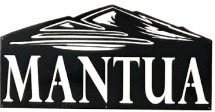Water Conservation
Water conservation is crucial in Utah due to the state's unique geography and climate. Utah is the second driest state in the U.S., with limited water resources that are already being strained by a growing population and increasing water demands. By conserving water, residents can help ensure a sustainable water supply for future generations, protect ecosystems, and reduce the need for costly water infrastructure projects. Additionally, water conservation can help save money on utility bills and decrease the energy needed to treat and transport water. Overall, water conservation is essential in Utah to preserve the state's precious water resources and promote long-term environmental and economic sustainability.
As a Utah resident, there are several ways you can conserve water both inside and outside your home:
Inside the Home:
1. Fix leaks promptly: Check for and repair any leaks in faucets, toilets, and pipes to prevent water waste.
2. Install water-saving fixtures: Replace old faucets, showerheads, and toilets with water-efficient models to reduce water usage.
3. Use appliances efficiently: Run dishwashers and washing machines with full loads and consider upgrading to energy-efficient models.
4. Take shorter showers: Limit your shower time to save water.
5. Turn off the tap: When brushing your teeth or washing dishes, turn off the tap when not actively using water.
6. Collect rainwater: Install a rain barrel to collect rainwater for outdoor use.
Outside the Home:
1. Water wisely: Water your lawn and garden early in the morning or late in the evening to reduce evaporation and avoid watering during windy conditions.
2. Choose drought-resistant plants: Replace water-intensive plants with native or drought-resistant species that require less water.
3. Use mulch: Mulch around plants and trees to retain moisture in the soil and reduce the need for frequent watering.
4. Adjust sprinklers: Regularly check and adjust sprinklers to ensure they are watering plants and not sidewalks or driveways.
5. Sweep, not hose: Use a broom instead of a hose to clean driveways and sidewalks to save water.
6. Consider xeriscaping: Xeriscaping involves designing landscapes that require minimal water, making it a sustainable option for Utah's dry climate.
By implementing these water-saving practices both inside and outside your home, you can contribute to water conservation efforts in Utah and help preserve the state's precious water resources.


